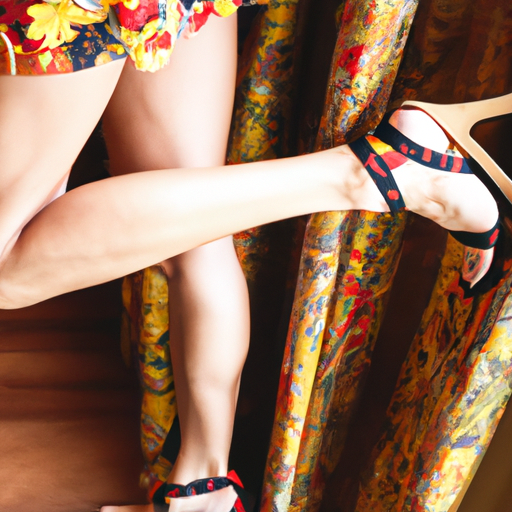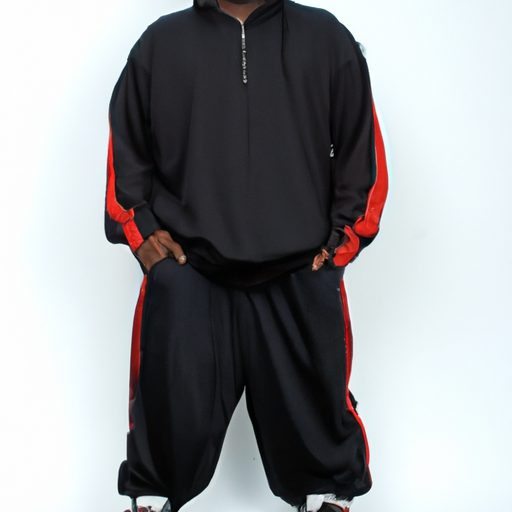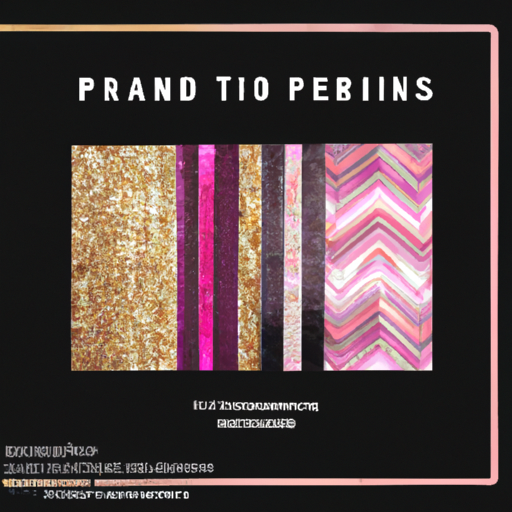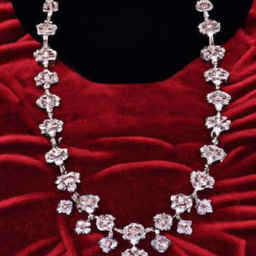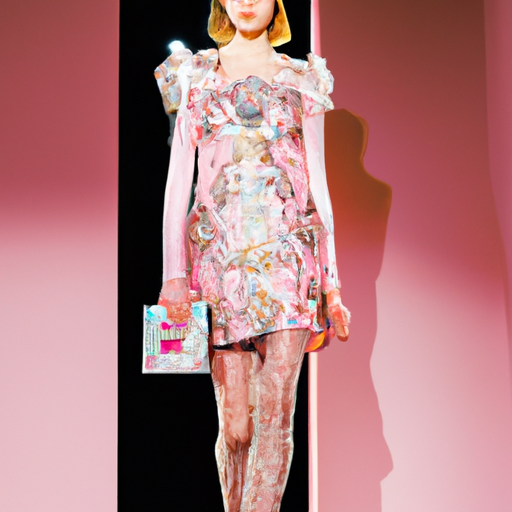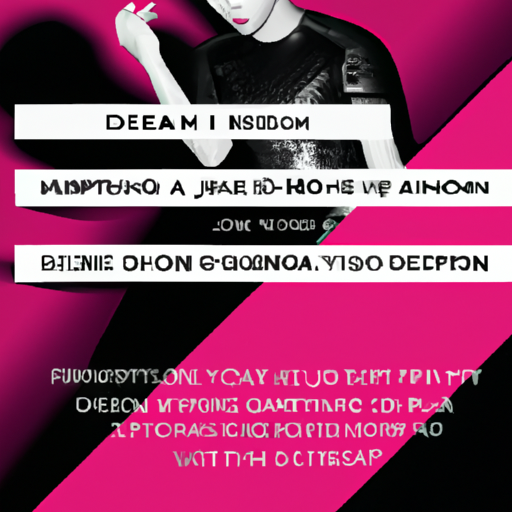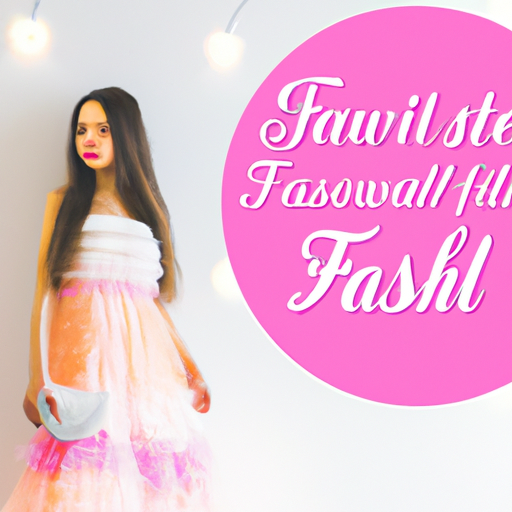Japanese Fashion Trends
So you think you know all there is to know about fashion? Well, get ready to be blown away by the fascinating world of Japanese fashion trends. From avant-garde street styles to traditional garments with a modern twist, this article will take you on a whirlwind tour of the Japanese fashion scene. Buckle up, fashionistas, because you’re about to embark on a thrilling journey that will leave you inspired and craving for more. Let’s explore the unique fashion landscape of Japan together!
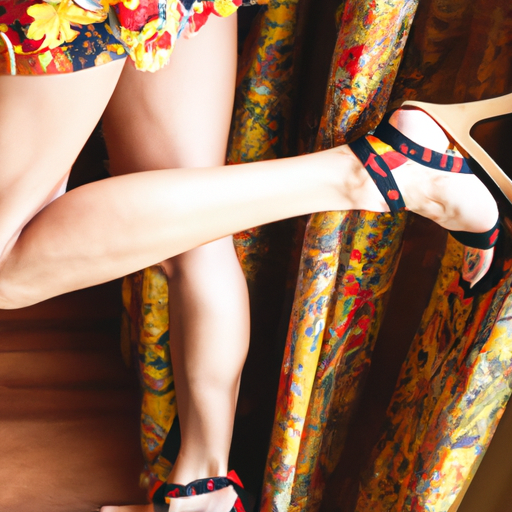
Table of Contents
Traditional Japanese Fashion
Kimono
The kimono is one of the most iconic and recognizable pieces of traditional Japanese fashion. This elegant garment has been worn in Japan for centuries and holds great cultural and historical significance. Typically made from silk, the kimono features wide sleeves, a wrap-style closure, and a long, flowing silhouette. It is often adorned with intricate patterns and motifs, representing various seasons, celebrations, and social statuses. Kimonos are still worn on special occasions, such as weddings and festivals, and are considered a symbol of tradition and elegance.
Yukata
The yukata is a casual and lightweight version of the kimono, typically made from cotton or linen. It is commonly worn during the summer months and is a popular choice for festivals and hot springs outings. The yukata is characterized by its vibrant and playful patterns, often featuring floral or geometric designs. Unlike the kimono, which is usually worn with an obi belt, the yukata is secured with a simple sash or ribbon, making it easier to wear and more suitable for casual occasions.
Hakama
The hakama is a traditional Japanese garment worn by both men and women. It is a type of wide-legged pants or skirt that is typically worn over a kimono. Originally designed as a functional piece of clothing for horseback riding and samurai warriors, the hakama has evolved into a symbol of elegance and tradition. Today, it is often seen in formal ceremonies, martial arts training, and traditional Japanese weddings. The hakama adds a touch of sophistication to any outfit and is a key element of traditional Japanese fashion.
Obi
The obi is a sash that is worn as a belt with a kimono. It is an essential accessory that adds structure and definition to the loose-fitting kimono. Obis come in various widths, lengths, and styles, and their intricate designs and patterns can express the wearer’s personality and social status. Tying an obi is an art form in itself, with different techniques and styles depending on the occasion and the wearer’s gender. Obis can be simple and understated or elaborate and eye-catching, making them a versatile and important element of traditional Japanese fashion.
Geta
Geta are traditional Japanese wooden sandals that are worn with both traditional and modern attire. They consist of a flat wooden base with two elevated supports and are held onto the feet with fabric straps. Geta not only elevate the wearer, protecting the kimono from coming into contact with the ground, but they also create a distinctive sound as the wooden soles meet the pavement. Geta are available in various styles and heights, ranging from casual and everyday wear to more formal and ceremonial occasions. Their unique design and impact on posture make them an interesting and integral part of traditional Japanese fashion.
Street Fashion
Harajuku Style
Harajuku style refers to a vibrant and avant-garde fashion subculture that originated in Tokyo’s Harajuku district. It is characterized by its bold and eclectic mix of colors, patterns, and styles, often combining elements of various subgenres within the Harajuku scene. Harajuku fashion is not limited to one specific aesthetic but instead encourages individuality and self-expression through fashion. It is a playground for young people to experiment with their style and showcase their creativity. Harajuku style has gained international recognition and has inspired numerous fashion designers and artists around the world.
Decora
Decora is a subculture within Harajuku fashion that is known for its excessive use of accessories and vibrant color combinations. The key to achieving the decora look is layering accessories such as hair clips, bows, belts, and statement jewelry in a riot of colors. Participants in this style often wear bright and colorful clothing, with an emphasis on kitschy, cute, and cartoon-inspired designs. Decora fashion promotes a sense of youthfulness, playfulness, and unapologetic self-expression.
Lolita
Lolita fashion is an elegant and feminine style that takes inspiration from Victorian and Rococo fashion. It emphasizes modesty, delicacy, and a sense of nostalgia. Lolita fashion is characterized by its modest silhouette, incorporating elements such as high collars, puffed sleeves, and voluminous skirts. Participants in this style often wear frilly and lace-trimmed clothing, paired with knee-high socks or stockings, and Mary Jane shoes. Lolita fashion is not limited to one specific color palette but often incorporates pastel shades, florals, and lace details.
Gyaru
Gyaru fashion is a vibrant and bold street style that emerged in the 1990s. It is characterized by its exaggerated makeup, tanned skin, and ostentatious clothing choices. Gyaru fashion often includes clothing items such as mini skirts, crop tops, platform shoes, and flashy accessories. Participants in this style embrace a more assertive and glamorous look, with a focus on standing out and making a statement. Gyaru fashion promotes confidence, individuality, and a rejection of traditional beauty standards.
Visual Kei
Visual Kei is a genre of music and a fashion subculture that originated in Japan in the 1980s. It is characterized by its flamboyant and theatrical style, often associated with rock bands and musicians. Visual Kei fashion consists of elaborate and eye-catching outfits, combining elements from various fashion eras, such as glam rock, gothic, and punk. Participants in this style often wear striking makeup, elaborate hairstyles, and clothing with intricate details and accessories. Visual Kei fashion is a true embodiment of rebellion, self-expression, and artistic freedom.
Modern Designers
Yohji Yamamoto
Yohji Yamamoto is a legendary Japanese fashion designer known for his avant-garde approach to fashion. His designs are often characterized by their oversized silhouettes, deconstructed cuts, and monochromatic color palettes. Yamamoto’s work challenges traditional notions of beauty and aesthetics, embracing imperfections and irregularities. His designs are highly influenced by Japanese culture, philosophy, and traditional craftsmanship, bridging the gap between minimalism and high fashion.
Issey Miyake
Issey Miyake is a renowned Japanese fashion designer whose innovative creations have made a lasting impact on the fashion industry. He is known for his experimental approach to fabric manipulation and his use of technology in design. Miyake’s designs often feature unconventional fabrics that are pleated, folded, or treated to create unique textures and shapes. His work embodies the concept of practicality and functionality, while also pushing the boundaries of traditional fashion norms.
Rei Kawakubo
Rei Kawakubo is the founder and creative director of the avant-garde fashion brand Comme des Garçons. She is considered one of the most influential designers in the fashion world and has challenged conventional notions of beauty and fashion since the inception of her label in 1969. Kawakubo’s designs are often characterized by their complex construction, asymmetrical shapes, and unconventional materials. She has been a trailblazer for gender-neutral fashion, blurring the lines between menswear and womenswear and promoting individuality and self-expression through clothing.
Jun Takahashi
Jun Takahashi is a Japanese fashion designer and the founder of the influential brand Undercover. Known for his distinct design aesthetic and dark, subversive themes, Takahashi’s creations have been celebrated for their avant-garde approach and storytelling elements. His designs often incorporate unconventional materials, striking graphics, and unexpected silhouettes, challenging traditional fashion norms and pushing artistic boundaries.
Hiroshi Fujiwara
Hiroshi Fujiwara is a Japanese streetwear designer and the founder of the influential label Fragment Design. With decades of experience in the fashion industry and a deep understanding of street culture, Fujiwara has played a pivotal role in bridging the gap between high fashion and streetwear. His collaborations with global brands have propelled him to the forefront of the fashion world, and his designs often reflect his passion for music, art, and subcultures.
Minimalism
Simplicity
Minimalism is a philosophy that seeks to simplify and declutter one’s life, and this concept extends to fashion as well. In Japanese fashion, minimalism is about embracing simplicity and eliminating excessive details. It involves choosing clean lines, understated designs, and muted color palettes. Minimalist fashion emphasizes functionality and rejects extravagant embellishments, allowing the wearer to focus on the quality and craftsmanship of each garment.
Neutral Colors
Neutral colors play a significant role in Japanese fashion’s minimalist aesthetic. Shades such as black, white, gray, beige, and navy are commonly seen in minimalist outfits. These colors create a sense of calm, elegance, and timelessness. By utilizing neutral colors, minimalist fashion allows the focus to shift toward the cut, texture, and overall design of the garments.
Clean Lines
Clean lines are a hallmark of minimalist fashion. This design element emphasizes simplicity and the elimination of unnecessary details. Minimalist garments often feature straight, geometric cuts and well-defined shapes, allowing the clothing to drape and flow effortlessly on the body. The clean lines contribute to a seamless and cohesive look that exudes a sense of modernity and sophistication.
Functional Accessories
In minimalist fashion, accessories are purposeful and play a key role in completing the outfit. Rather than being purely ornamental, minimalist accessories are chosen for their practicality and ability to enhance the overall look. Examples include minimalistic watches, simple leather belts, and sleek handbags that complement the clean lines of the clothing. Functional accessories add a finishing touch to the outfit without overwhelming the minimalistic aesthetic.
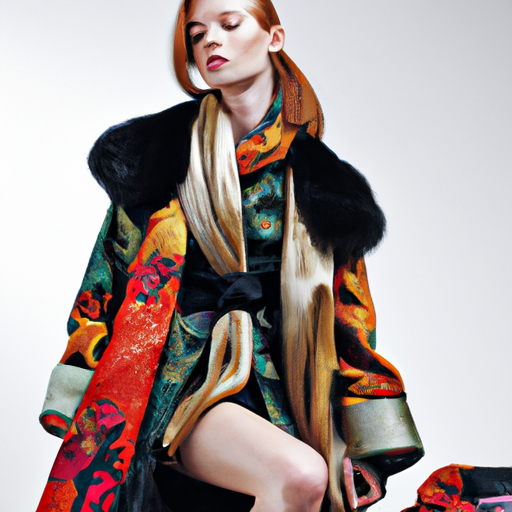
School Uniforms
Gakuran
Gakuran is a traditional Japanese school uniform typically worn by boys. It consists of a high-collared, military-style jacket with brass buttons, paired with matching trousers. The gakuran is inspired by Western military uniforms and is often seen as a symbol of discipline and formality. The jacket’s structured silhouette and crisp lines create a sense of authority and elegance, representing traditional values in Japanese education.
Sailor Uniform
The sailor uniform, also known as the “sailor fuku,” is a classic Japanese school uniform worn by both boys and girls. It originated from the naval uniforms of the early 20th century and has since become a staple in Japanese school fashion. The sailor uniform for girls typically features a sailor collar, pleated skirt, and a ribbon tie. It is known for its clean lines and preppy aesthetic, representing a sense of youthfulness and academic achievement.
Seifuku
Seifuku refers to the traditional Japanese school uniform for girls. It typically consists of a blouse, a pleated skirt, and often includes a sweater or blazer as an additional layer. Seifuku designs vary between schools, with different colors, patterns, and accessories used to distinguish one institution from another. Seifuku is associated with femininity, modesty, and conformity, reflecting the cultural values and expectations placed on female students in Japan.
Loose Socks
Loose socks are a distinctive accessory often worn by Japanese high school girls as part of their school uniforms. These socks are knee-length and made from stretchy, ribbed fabric. Loose socks are worn slouched down, creating a relaxed and casual appearance. Originally popularized in the 1980s, loose socks became a fashion trend and represented rebellion against strict school dress codes. Today, loose socks are less prevalent but can still be seen as a fashion statement in certain subcultures.
Randoseru
Randoseru is a type of backpack that is commonly used by elementary school students in Japan. These sturdy and structured backpacks are usually made from leather and feature a boxy shape. Randoseru backpacks often come in traditional colors such as black or red, and they are seen as a symbol of a child’s entrance into formal education. Randoseru backpacks are designed to be durable, functional, and spacious, accommodating students’ textbooks, supplies, and personal belongings.
Workwear
Business Suits
Business suits are a ubiquitous sight in Japanese workplaces, reflecting the country’s professional and formal culture. Both men and women wear suits as a standard attire in corporate environments. Traditional Japanese business suits are often dark-colored and feature structured blazers and pleated trousers for men, while women typically wear tailored jackets and knee-length skirts or dress pants. Business suits exude professionalism and convey a sense of discipline and respect in the workplace.
Office-Friendly Attire
In addition to traditional business suits, there is also a range of office-friendly attire commonly seen in Japanese workplaces. These outfits often include tailored dresses, skirts, blouses, and dress pants in neutral colors. Women may choose to incorporate feminine details such as ruffles or subtle prints, while still maintaining a polished and conservative appearance. Office-friendly attire in Japan is characterized by its modesty, sophistication, and adherence to company dress codes.
Structured Clothing
Structured clothing is a key component of workwear in Japan. For both men and women, jackets, blazers, and tailored pieces are carefully constructed to ensure a sleek and professional appearance. Structured clothing enhances the wearer’s silhouette, providing a polished and put-together look. Whether it’s a well-fitted blazer or a crisply pressed shirt, structured clothing contributes to an overall sense of professionalism and attention to detail in Japanese workwear.
Neutral Colors
Similar to minimalist fashion, neutral colors play a prominent role in Japanese workwear. Shades such as black, gray, navy, and beige are commonly seen in office environments. These colors are chosen for their versatility, timelessness, and ability to create a cohesive and professional appearance. By utilizing neutral colors, workwear in Japan allows individuals to focus on their work performance without distractions from bold or distracting clothing choices.
Minimalism
Minimalism is a fundamental aspect of Japanese workwear. Clean lines, absence of excessive details, and simplicity are all valued in professional attire. Minimalist workwear allows the focus to shift toward the individual’s skills, qualifications, and professionalism, rather than drawing attention to their wardrobe choices. By prioritizing simplicity and functionality, Japanese workwear embodies professionalism, discipline, and efficiency.
Gender-Neutral Fashion
Androgynous Style
Androgynous style in Japanese fashion challenges conventional gender norms by embracing clothing that is not distinctly masculine or feminine. It blurs the lines between traditional gender expectations, allowing individuals to express themselves authentically. Androgynous fashion often features loose-fitting garments, neutral color palettes, and minimalist designs. Participants in this style combine clothing items typically associated with both men’s and women’s fashion, creating a unique and inclusive aesthetic.
Unisex Clothing
Unisex clothing refers to garments that can be worn by individuals of any gender. It is a reflection of a more inclusive approach to fashion, where clothing is not limited by societal gender expectations. Unisex clothing often features simple silhouettes, clean lines, and neutral hues. It focuses on comfort, practicality, and a timeless appeal. By embracing unisex clothing, Japanese fashion encourages individuality and self-expression, regardless of one’s gender identity.
Blurring Gender Norms
Japanese fashion embraces the blurring of gender norms, challenging the idea that clothing should be limited to a specific gender. This inclusive approach allows individuals to freely choose their clothing based on personal style, rather than societal expectations. By blurring gender norms, Japanese fashion breaks down barriers and fosters a sense of acceptance, diversity, and equality.
Oversized Silhouettes
Oversized silhouettes are a common feature in gender-neutral fashion. Loose-fitting clothing allows individuals to express themselves without adhering to traditional gender-specific fashion constraints. The use of oversized garments challenges the idea that clothing should strictly conform to the contours of one’s body, offering a sense of comfort, freedom, and individuality.
Layering
Layering is an essential technique often utilized in gender-neutral fashion. The practice of layering different garments, textures, and patterns adds depth and visual interest to an outfit. By incorporating layering techniques, individuals can create looks that are unique to their personal style, regardless of gender. Layering allows for experimentation and self-expression, embracing individuality and rejecting rigid gender norms.
Kawaii Culture
Cute Aesthetics
Kawaii, meaning “cute” in Japanese, is a cultural phenomenon that heavily influences Japanese fashion. Kawaii fashion embraces an aesthetic centered around childlike innocence, playfulness, and cuteness. It often features pastel colors, oversized bows, frilly details, and adorable motifs. Kawaii fashion encourages individuals to embrace their youthful, whimsical side, promoting a sense of joy, happiness, and optimism.
Pastel Colors
Pastel colors are a staple of kawaii fashion. Soft hues such as baby pink, mint green, lavender, and sky blue create a dreamy and delicate aesthetic. These colors evoke a sense of innocence, sweetness, and femininity. Pastel colors are often seen in clothing, accessories, and even hair color choices within the kawaii fashion subculture.
Cartoon Characters
Cartoon characters play a significant role in kawaii fashion. Iconic characters such as Hello Kitty, My Melody, and Rilakkuma are frequently featured on clothing, accessories, and even footwear. These characters add a touch of whimsy and nostalgia to kawaii fashion, often reminding people of their favorite childhood memories. Cartoon characters in kawaii fashion convey a sense of playfulness, individuality, and a connection to popular culture.
Plush Toys
Plush toys or stuffed animals are popular accessories in kawaii fashion. Many people adorn their bags, backpacks, or clothing with small plush toys or keychains, adding an element of cuteness to their outfits. Plush toys represent comfort, warmth, and a childlike sense of security. The presence of these toys in kawaii fashion further reinforces the emphasis on playfulness, innocence, and the celebration of all things cute.
Frilly Details
Frilly or lace details are commonly found in kawaii fashion. Whether it’s a blouse with delicate lace trim, a petticoat with layers of ruffles, or a dress adorned with bows, frilly details add a touch of femininity and whimsy to kawaii fashion. These intricate embellishments contribute to the overall aesthetic of cuteness and playfulness, elevating outfits to another level of charm and delight.
Wabi-Sabi Influence
Imperfection
Wabi-sabi is a Japanese aesthetic philosophy that emphasizes finding beauty in imperfection and impermanence. In fashion, this concept often manifests as intentionally embracing asymmetry, worn fabric, or visible hand stitching. Wabi-sabi influence in Japanese fashion encourages individuals to appreciate the unique qualities and individuality of each garment, celebrating the signs of wear and age as part of its beauty and character.
Natural Fabrics
Natural fabrics such as cotton, linen, silk, and wool are commonly favored in wabi-sabi influenced fashion. These fabrics possess unique textures, irregularities, and variations, embodying the imperfections that are celebrated in Japanese aesthetics. Natural fabrics provide a sense of comfort, breathability, and a connection to nature, aligning with the wabi-sabi philosophy of finding beauty in simplicity and authenticity.
Earthly Tones
Earthly tones, often derived from natural sources such as plants and minerals, are a prominent feature in wabi-sabi influenced fashion. Colors such as muted browns, grays, greens, and creams create a sense of harmony and grounding. These tones evoke a deep connection to nature and reflect the simplicity and quiet elegance valued in wabi-sabi aesthetics.
Handmade Elements
Handmade elements, such as hand embroidery, hand-dyeing, and hand weaving, are highly valued in wabi-sabi influenced fashion. These artisanal techniques embrace the irregularities and imperfections that come with the human touch, resulting in truly unique and one-of-a-kind pieces. Handmade elements celebrate the craftsmanship and dedication of artisans, contributing to the overall aesthetic of wabi-sabi and the appreciation of imperfection.
Simplicity
Simplicity is a fundamental principle in wabi-sabi influenced fashion. Minimalism and restraint are key elements, allowing the focus to shift toward the beauty that can be found in the most basic and unassuming designs. Simple silhouettes, clean lines, and unembellished garments create a sense of harmony, calm, and authenticity, aligning with the wabi-sabi philosophy of finding beauty in simplicity.
Fashion and Technology
High-Tech Fabrics
Innovative high-tech fabrics have made significant advances in the world of Japanese fashion. These materials often incorporate functional properties such as moisture-wicking, UV protection, heat insulation, and antibacterial properties. High-tech fabrics have revolutionized the way clothing is designed and worn, enhancing comfort, performance, and longevity.
Smart Clothing
The integration of technology in fashion has given rise to the concept of smart clothing. Smart clothing, also known as wearable technology, incorporates elements such as sensors, LED lights, and microchips into garments. These features can monitor biometric data, provide interactive displays, or even change colors and patterns. Smart clothing blurs the boundaries between fashion and technology, creating a dynamic and futuristic fashion experience.
Interactive Accessories
Interactive accessories have become increasingly popular in Japanese fashion, allowing individuals to express their personal style in innovative ways. These accessories often incorporate technology that enables them to change colors, emit light, or even play music. Interactive accessories create a sense of interactivity and playfulness, allowing individuals to showcase their creativity and individuality beyond traditional fashion choices.
LED Fashion
LED fashion is an eye-catching trend that has gained popularity in Japanese fashion. LED lights are incorporated into clothing, shoes, and accessories, creating a stunning visual display. LED fashion allows individuals to stand out in a crowd and make a bold fashion statement, combining technology and creativity in a unique and memorable way.
Fashionable Wearable Tech
Fashionable wearable tech bridges the gap between technology and style, creating elegant and functional accessories that double as fashion statements. Examples include smartwatches, fitness trackers, and stylish headphones. These wearable devices blend seamlessly into daily life, enhancing both fashion and functionality. The integration of technology and fashion allows for innovation and unique design possibilities.
In conclusion, Japanese fashion trends encompass a wide range of styles, aesthetics, and influences. From traditional attire such as kimonos and hakama to avant-garde designs by renowned Japanese designers, Japanese fashion reflects a rich cultural heritage, individuality, and a constant pursuit of innovation. Whether it’s embracing the simplicity of minimalism, blurring gender norms, or celebrating cuteness in kawaii culture, Japanese fashion continues to inspire and captivate individuals around the world. With the integration of technology and a growing emphasis on sustainability and inclusivity, the future of Japanese fashion is sure to be both exciting and transformative.
